by Maxine Carter-Lome
The term tôle, derived from the French tôle peinte, meaning “painted sheet metal,” refers to the decorative process of applying paint and lacquer to tin, initially as a way to prevent common household objects from rusting but later as a form of embellishment. In the antiques and collectibles marketplace, toleware refers to decorative objects created from metal, typically tin or thin steel, lacquered and adorned often in decorative styles such as Arts and Crafts and Pennsylvania Dutch.
Wildly popular in the late 18th century, with a short-lived revival mid-20th century, toleware is today experiencing a second renaissance among collectors and enthusiasts who love the look and affordability of these decorative, utilitarian objects.
Decorated tinplate caught on in Europe in the first half of the 18th century and by mid-century, painted tin objects made in England were being sold to the colonies, as were the thinly milled, tin-plated sheets themselves. It is Edward and William Pattison who are generally credited with introducing “American-made” toleware. The brothers, tinsmiths by trade, came over from Ireland in about 1740 and settled in Berlin, Connecticut. A 1749 English law that forbade the production of tin in America prevented the brothers from plying their trade until they could secure a steady and reliable source for the raw goods from England. Soon after they started turning out a variety of hand shaped household utensils and selling them door to door. By mid-century their business was flourishing, despite the tariffs imposed on their imported tin sheets.
German immigrants in Pennsylvania also carried on their more European toleware tradition utilizing not only metal, but wood, and painting on pieces of furniture and other wood objects. The Pennsylvania Dutch style (“Dutch” being derived from the German word for “German” – “Deutsch”) is characterized by its use of bold color and design.
From Tinplates to Toleware
Tinsmithing was a hand trade. The “tinplates” used to create toleware were created with thin sheets of charcoal-smelted iron which had been reduced in a rolling mill and then coated with melted tin-three dips for single tinplate, six for a more durable tinplate-creating a heavier and longer lasting metal than the light tin used today.
The Revolutionary War created a gap in the manufacture of toleware, and after the war toleware manufacturing flourished using improved methods to paint and lacquer he finished goods. By the late 18th century, most tinware sold was also decorated. In family workshops primarily found throughout the northeast and in Pennsylvania, the men created the tin pieces and sold them after they were finished, while the women would paint the tinware, known as “flowering,” decorating the finished pieces with beautiful elaborate hand painted designs featuring stylized fruits, flowers, and accent strokes. These craftsman and tinsmiths made beautifully hand painted trays for the gentry, and shiny, unpainted, and uncoated trays called “poor man’s silver” for those with less deep pockets. Many, like the Pattison brothers, were also peddlers, selling their wares door to door, often bypassing and undercutting local merchants with their wider selection of items.
Mid-Century Toleware
Toleware reached its height of popularity in America in the 18th century, and then saw a brief revival in the 1950s that lasted more than a decade.
During the 1950s and 1960s, American companies such as Plymouth, Nashco, Pilgrim, and Fine Arts Studio produced reproduction toleware pieces, particularly trays, that were then hand painted in an assembly line manner. Painters used the distinctive one stroke method where a brush was “loaded” with one or more colors of acrylic paint and applied to the metal in a single stroke, creating both light and shade on flower petals, leaves or other decoration. These “studio trays” were painted by accomplished artists then hand lacquered for a lasting finish.
From the 1920s to the 1940s, reproduction toleware was being imported from countries such as Mexico, China, and Taiwan. Many of these pieces utilized the same painting techniques, design, and color mix as the earlier forms but were more available and affordable. Today, they are sought out by the casual collector or enthusiast, with items generally found in the $50 range. On the other end of the spectrum, exceptional examples of authentic 18th century French, English or American pieces (showing evidence of hand manufacture and hand painting or stenciling) in excellent condition with strong provenance can bring from one to several thousands at auction, including an October, 2017 sale of a 19th century red bread tray with floral decoration that sold at Pook & Pook for $10,980 from the collection of Eugene and Dorothy Elgin. As with most antiques, quality, uniqueness, provenance, and overall beauty drive the market for this colorful collectible.

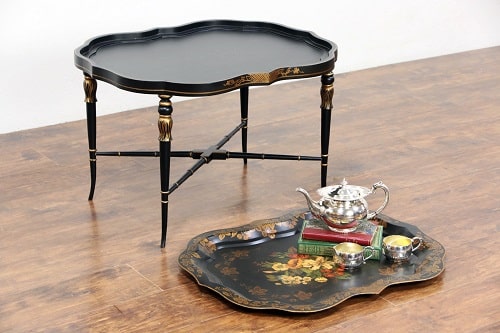

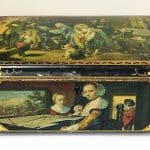
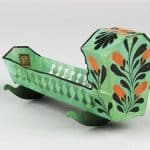
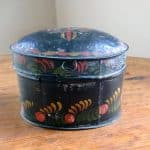

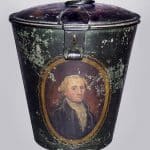




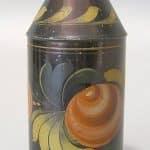




Related posts: